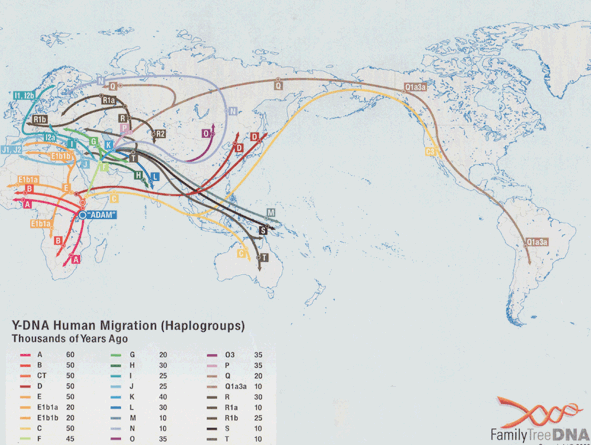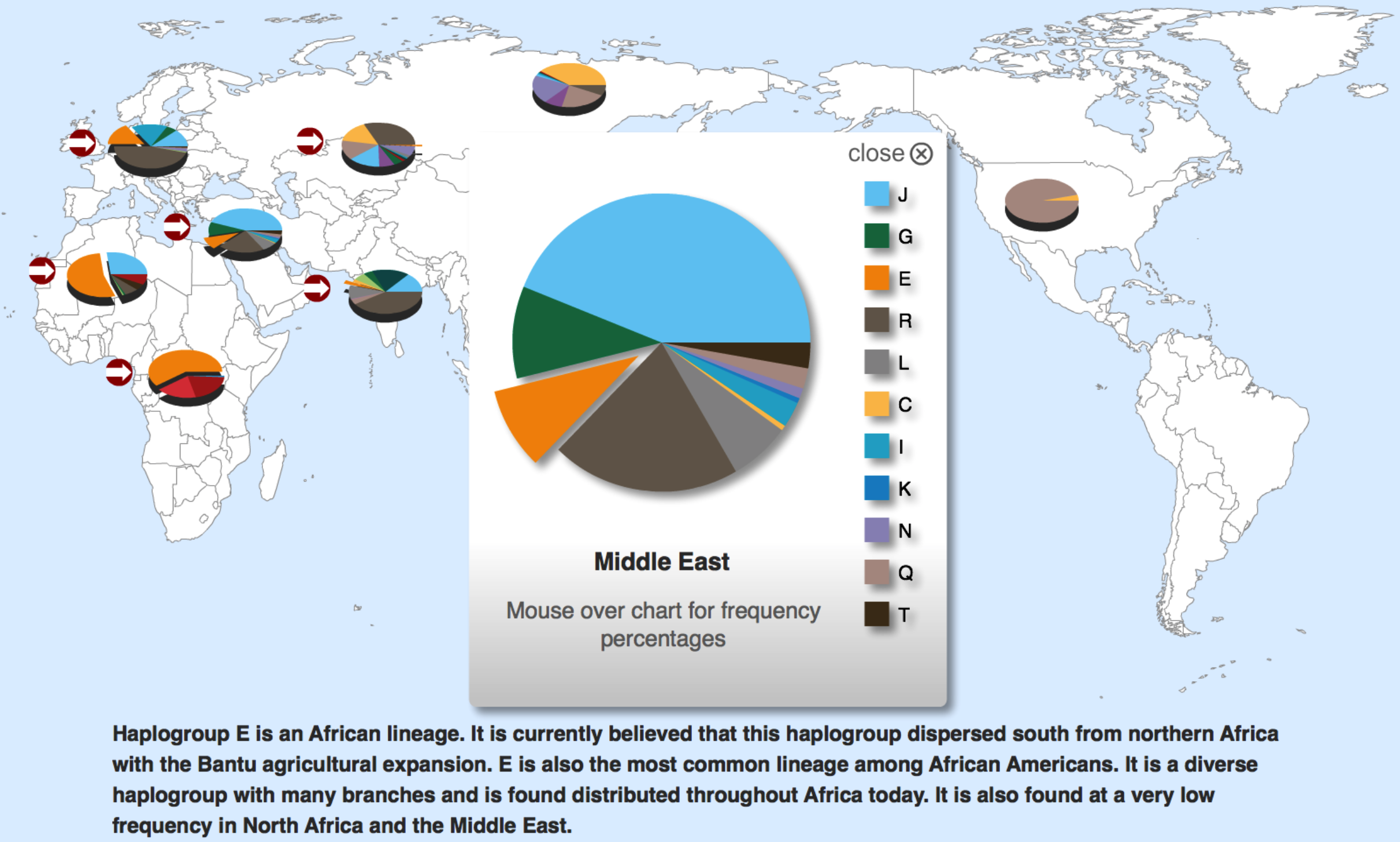
With advanced scientific testing of a person's DNA, it is possible today to identify ancestors and relations based on the inherited Y-chromosome from the father and mitochondrial DNA from the mother.
The science is simple: linked blocks of DNA across the 22 autosomal chromosomes are matched between two people. The degree of matching yields evidence for the relationship.
At each of the locations on the Y-chromosome there is the potential for some variation (repeat of the same DNA sequence). When Short Segments of DNA (STR) are measured, the number of repeats in that short sequence changes over time and these changes are passed from father to son. STR analysis provides a person’s haplogroup, which is used to predict an individual haplogroup. In order to be more precise an SNP (single nucleotide polymorphisms) can be used to determine the exact haplogroup. Therefore haplogroupgesignation using STR results rather than SNP is a matter of statistical probability rather than absolute certainty.

The results from my DNA (above) predict that my haplogroup is E1b1b1 and depicted by the migration of the people who have this haplogroup in the map (below, yellow line). It is interesting that a member of the Guerios family in Brazil does not share the same haplogroup, suggesting that they may not be directly related, while a COHEN from Palestine share at least all but one repeat!!!! What is interresting is that my predicted haplogroup does not place my ancestors as the Ghassanids from Yemen!! However, my ancestors have come from Africa but in smaller numbers than was expected (less than 9% in Middle East)


It is important to note that although genetic genealogy is an informative it is not without and it is complementary to the old fashion family trees that have been carried out by many families in the past